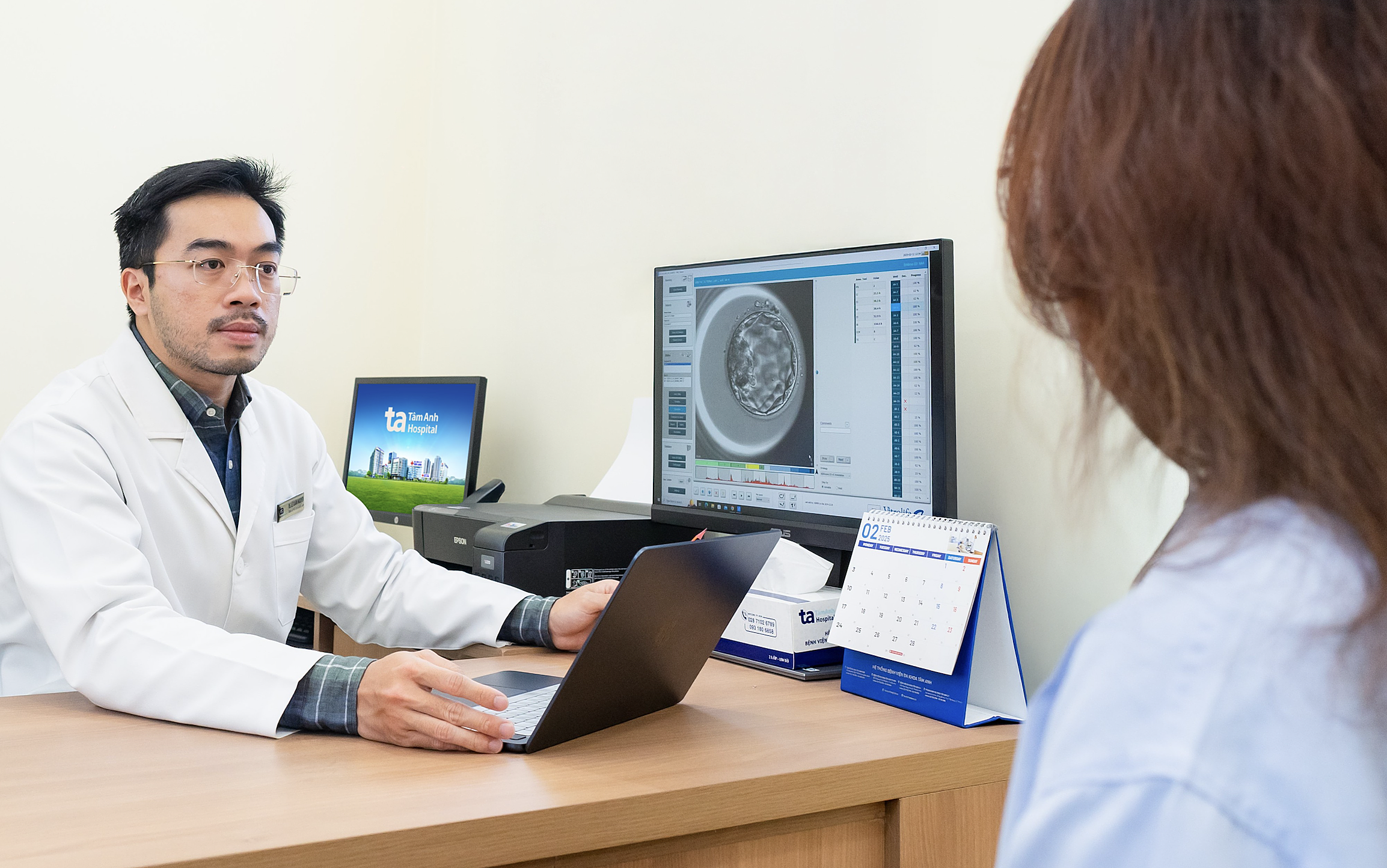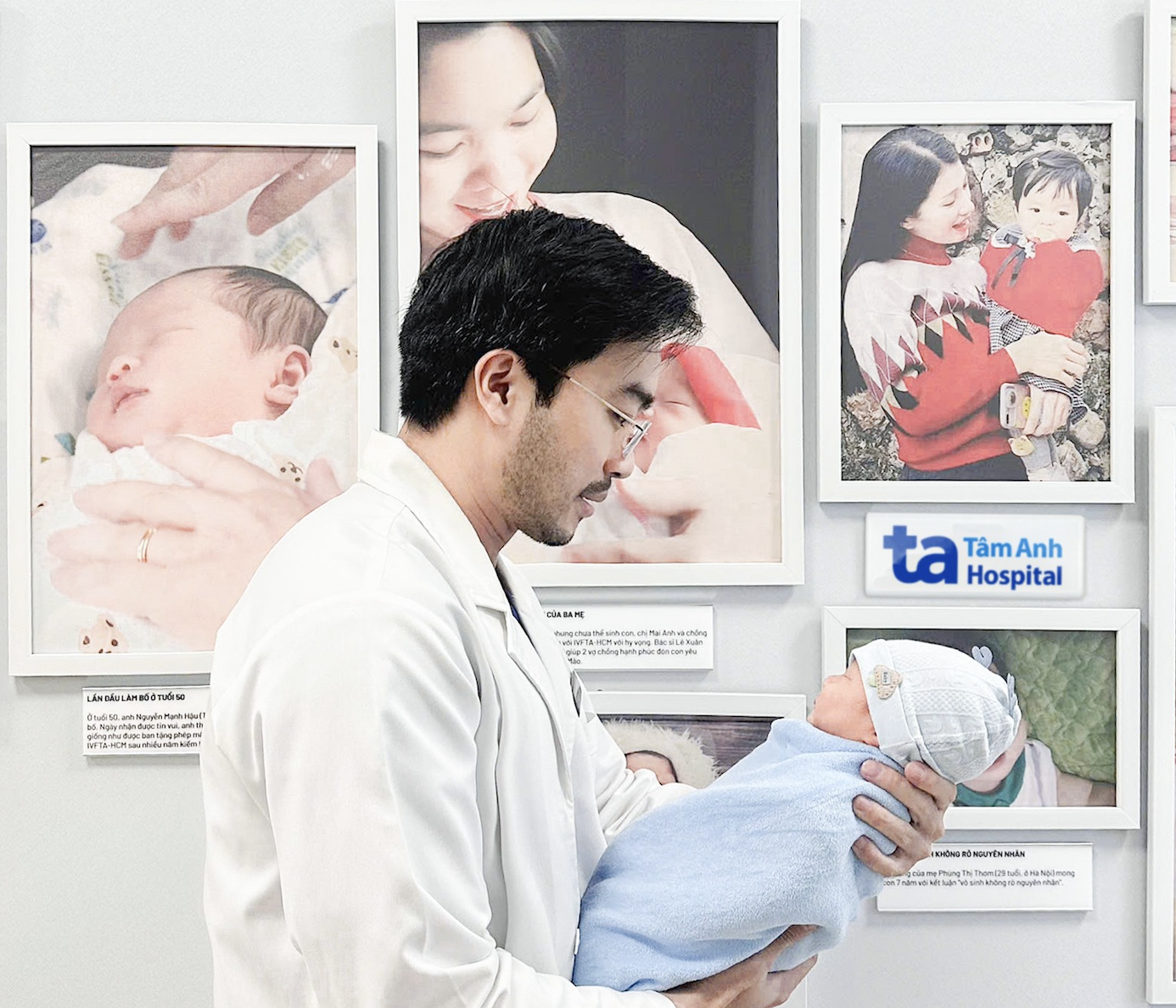"Last year, we returned to Vietnam to begin infertility treatment. This year, we return to our family with the joyful sounds of a baby," shared Tram, 43, as she cradled her child during a visit to the doctors at the Fertility Support Center of Tam Anh General Hospital in Ho Chi Minh City in early September.
The couple, residing in the US, had been diagnosed with unexplained infertility. They underwent three IVF cycles in the US, with five embryo transfers that failed to result in pregnancy. Two attempts with surrogacy also ended in early miscarriages.
"The treatment costs were exorbitant, around 5 billion VND (approximately 210,000 USD), and we still didn't have a child," Tram said, adding that the IVF procedures in the US were also complex and time-consuming.
Last year, during a trip to Vietnam to visit family and for leisure, the couple visited the Tam Anh IVF Center in Ho Chi Minh City. Doctor Le Xuan Nguyen assessed the husband's reproductive health as normal, while the wife was considered of advanced maternal age with severe endometriosis and chronic inflammation of the uterus. An ultrasound revealed only a few ovarian follicles, but hope for conception remained.
 |
Doctor Le Xuan Nguyen consults with a patient. Illustrative photo: Thanh Luan |
As the couple was only in Vietnam for a month, Dr. Nguyen developed a time-optimized and effective treatment plan. Tram underwent ovarian stimulation and 10 mature eggs were retrieved in the first cycle. Embryologists selected suitable sperm from her husband for intracytoplasmic sperm injection (ICSI), resulting in eight embryos by day three.
The embryos were cultured to day five (blastocyst stage) to eliminate those with poor developmental potential, increasing the chances of success. Continuous monitoring revealed that most of Tram's embryos developed abnormally, with uneven cell division and early cessation of growth, yielding only two day-five embryos. Artificial intelligence (AI) software graded the embryos as quality 3, predicting a reasonable chance of pregnancy. All embryos were cryopreserved for transfer at the ideal time.
Tram returned to the US and took prescribed medication to manage her endometriosis. Dr. Nguyen maintained regular communication with US doctors regarding her condition, adjusting the treatment plan as needed.
Late last year, she returned to Vietnam for embryo transfer, achieving pregnancy on the first attempt. After 11 years of waiting, the couple welcomed a healthy baby boy, weighing over 3.5 kg, in June.
 |
Dr. Nguyen holds the couple's son. Photo: Provided by the patient |
According to Dr. Giang Huynh Nhu, Director of Tam Anh IVF Center in Ho Chi Minh City, since 2023, the center has treated over 4,100 international patients for infertility, with the number steadily increasing. Patients primarily come from the US, UK, Japan, Australia, Singapore, and the Philippines, with a noticeable increase during holidays, Tet (Lunar New Year), and summer. Most cases involve patients with complex challenges such as advanced maternal age, complicated medical histories, long-term infertility, or repeated failed IVF attempts in other countries.
International patients receive remote monitoring and treatment support from doctors, minimizing the impact of distance. A key factor attracting international patients is the affordable cost of treatment. According to Forbes magazine, one IVF cycle in Vietnam costs around 4,000-5,000 USD, about one-third the cost in other ASEAN countries. In the US, one IVF cycle can exceed 30,000 USD.
With its ISO 5 certified lab-in-a-lab, AI-integrated time-lapse embryo incubators, and advanced IVF techniques, Tam Anh IVF Center achieved an average pregnancy rate of nearly 79% after embryo transfers in 2024.
Hoai Thuong
*The patient's name has been changed.












